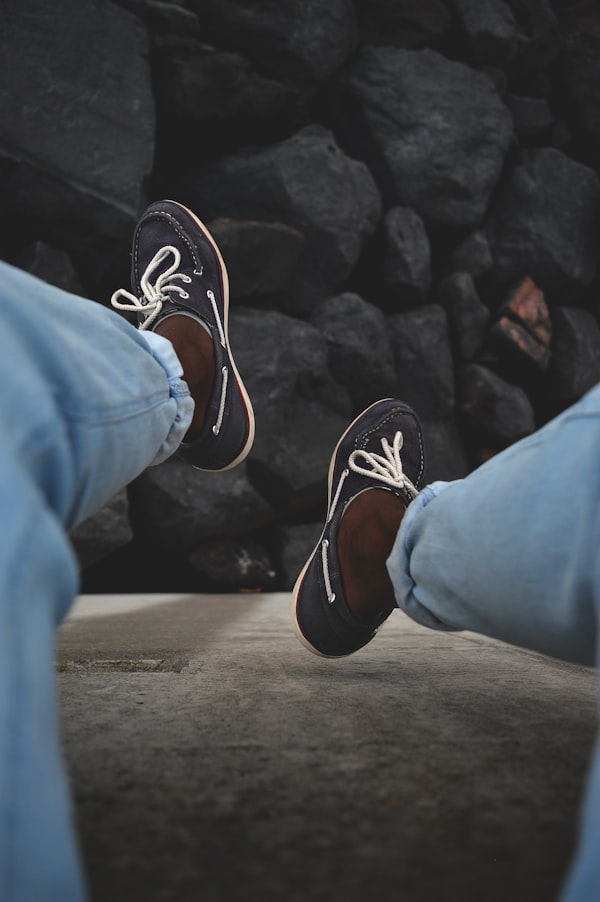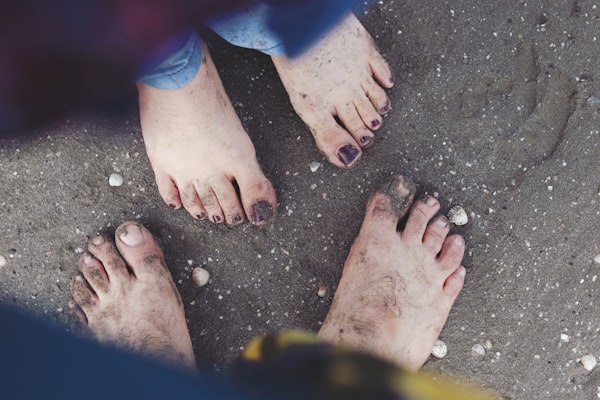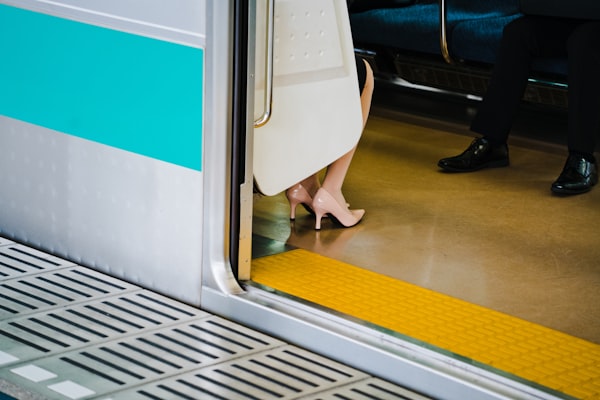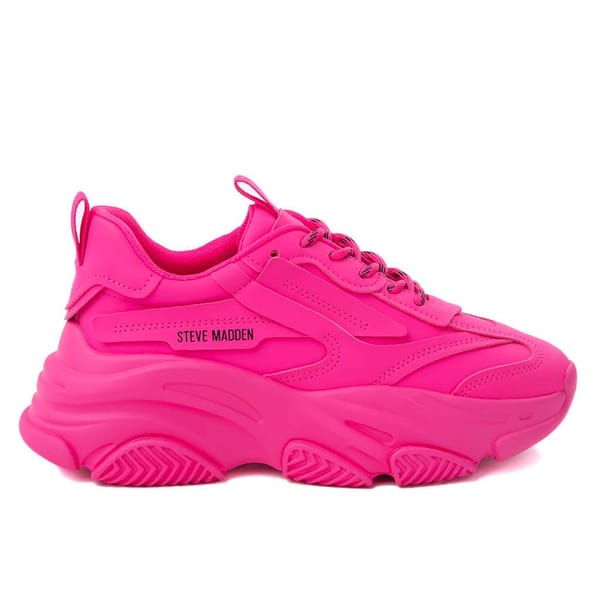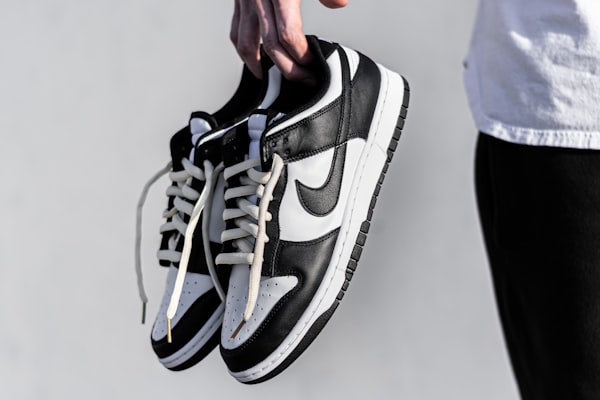Are you tired of feeling like your bunion is calling the shots when it comes to your shoe selection? Say goodbye to the bunion blues and hello to stylish comfort!
Imagine this: You're ready to strut your stuff, but those pesky bunions are holding you back from shoe nirvana. Fear not! We've got the scoop on choosing shoes that accommodate your bunion and elevate your entire wardrobe game.
Gone are the days of sacrificing style for comfort or vice versa. With the right shoes, you can conquer any occasion – from boardroom meetings to weekend brunches – with confidence and flair. Who says you can't have it all?
Step into our world of bunion-friendly footwear as we unveil the ultimate guide to shoe selection. Whether you're a sneakerhead, a boot lover, or a sandal enthusiast, we've got the perfect pair waiting for you. Bid farewell to bunion discomfort and hello to fashion-forward bliss – let's kick those bunion blues to the curb once and for all!
What Are Bunions?
Bunions manifest as bony protrusions emerging at the base of the big toe joint. They materialize when the big toe exerts pressure on its neighboring toe, prompting the enlargement and outward projection of the joint. This condition often induces discomfort, particularly when wearing constrictive footwear, and can lead to inflammation and swelling in the afflicted area.

The precise origins of bunions remain somewhat elusive, yet various factors may play a role, including wearing shoes that are too tight or narrow, genetic predisposition, prior foot injuries, and foot abnormalities. Women, in particular, are prone to developing bunions, which could be attributed to wearing heels or other shoes that compress the toes frequently.
Why Is Shoe Choice so Important?
Choosing the proper footwear is paramount when dealing with bunions, as it directly impacts comfort, pain management, and the condition's progression. Here's why shoe selection is crucial:
- Alleviating Discomfort: Bunions can cause persistent pain and discomfort, particularly when pressure is applied to the affected area. Wearing too tight or narrow shoes exacerbates this discomfort by further compressing the toes and aggravating the bunion. Opting for footwear with a wide toe box provides ample space for the toes, reducing friction and pressure on the bunion.
- Preventing Further Irritation: Ill-fitting shoes can worsen existing bunions and contribute to the development of additional foot problems such as corns, calluses, and ingrown toenails. Selecting shoes with soft, cushioned materials and minimal seams reduces friction and irritation, helping to prevent complications associated with bunions.
- Promoting Proper Alignment: Proper shoe support is essential for maintaining optimal foot alignment and reducing strain on the bunion. Shoes with adequate arch support and cushioning help distribute weight evenly across the foot, alleviating pressure on the bunion and promoting a more natural gait.
- Slowing Bunion Progression: While shoe choice alone cannot reverse the progression of bunions, it can help slow down their advancement. Individuals can mitigate further deformity and discomfort over time by selecting footwear that accommodates the bunion and minimizes pressure on the affected area.
- Enhancing Overall Foot Health: Opting for supportive, well-fitting shoes helps alleviate bunion pain and promotes overall foot health. By prioritizing comfort and functionality over fashion, individuals with bunions can reduce the risk of developing additional foot ailments and maintain mobility and independence.

What Are the Features I Should Look for In a Shoe?
When choosing shoes to accommodate bunions, several key features can help alleviate discomfort and promote foot health. Here are the essential features to look for:
1. Wide Toe Box
When selecting shoes, prioritize those with a generous toe box, offering plenty of space for your toes to splay comfortably. A wide toe box is crucial for individuals with bunions, as it prevents the toes from being cramped or squeezed together, exacerbating discomfort and irritation. A spacious toe box reduces pressure on the bunion by allowing your toes to spread out naturally, alleviating pain and minimizing the risk of further aggravation.
Additionally, a wide toe box accommodates any swelling or inflammation associated with bunions, ensuring a comfortable fit throughout the day. Look for shoes that provide ample width in the toe area without sacrificing overall support and stability, allowing you to move easily and confidently while effectively managing your bunion condition.
In addition to prioritizing shoes with a wide toe box, individuals with bunions can also consider stretching their footwear to accommodate their condition. Shoe stretching can be done professionally by cobblers or at home using various methods, such as a shoe stretcher or stretching spray.

By gently expanding the toe box area, shoes can provide even more room for the toes to spread out comfortably, reducing pressure on the bunion and enhancing overall comfort. Stretching shoes can be particularly beneficial for individuals with bunions experiencing swelling or inflammation, ensuring a customized fit that promotes pain relief and minimizes discomfort throughout the day.
2. Soft, Flexible Materials
When shopping for shoes, opt for those crafted from soft, flexible materials that gently mold to the contours of your foot. These materials minimize friction and irritation, enhancing comfort for bunions. Avoid rigid materials that can exacerbate discomfort by restricting movement or creating pressure points. Soft, pliable materials ensure a snug yet gentle fit, allowing you to move freely without aggravating bunion pain. Prioritizing footwear with these qualities promotes comfort and minimizes the risk of irritation, enabling you to stride confidently throughout the day.
3. Low Heel or Flat Sole
Opt for shoes featuring a low heel or flat sole, as they distribute weight more evenly across the foot, reducing pressure on bunions. High heels shift body weight forward, intensifying stress on the bunion and heightening discomfort. Selecting footwear with a low heel or flat sole alleviates strain on the forefoot and bunion area, promoting comfort and mitigating pain associated with bunions. This choice ensures optimal support and stability while enabling you to navigate daily activities with ease and comfort.
4. Adjustable Straps or Laces
Opt for shoes with adjustable straps or laces to customize the fit according to your foot's unique contours and bunion placement. These features offer enhanced support and stability while minimizing pressure points, ensuring a comfortable and secure fit. Adjusting the straps or laces can alleviate discomfort associated with bunions and maintain optimal foot alignment throughout the day. This customizable feature caters to individual needs, allowing you to find the perfect fit for maximum comfort and relief from bunion-related pain.
5. Cushioned Insoles
When selecting shoes, prioritize those with cushioned insoles that offer ample shock absorption and support, particularly under the ball of the foot. These insoles help distribute pressure evenly, reducing strain on the bunion and enhancing overall comfort while walking or standing. Cushioned insoles provide a soft and supportive foundation and minimize discomfort associated with bunions, allowing you to move easily and confidently throughout the day. This feature ensures optimal cushioning and support, promoting comfort and alleviating pain in the bunion area.
6. Arch Support
Choose shoes with sufficient arch support to uphold proper foot alignment, thereby alleviating strain on the bunion. Adequate arch support distributes body weight evenly, lessening pressure on the bunion and fostering comfort. By ensuring proper foot alignment, supportive arches reduce the likelihood of exacerbating bunion-related discomfort, allowing for improved mobility and pain relief. Selecting footwear with adequate arch support provides a stable and supportive foundation, promoting overall foot health and comfort throughout the day.
7. Seamless Interior
Opt for shoes featuring a seamless interior to mitigate friction and irritation against the bunion. Seamless construction reduces the likelihood of developing blisters, corns, or calluses, enhancing comfort and minimizing discomfort. By eliminating seams that can rub against the bunion, seamless footwear provides a smooth, irritation-free experience, promoting optimal foot health. Prioritizing shoes with a seamless interior ensures a comfortable fit and reduces the risk of complications associated with bunions, allowing you to move with ease and confidence throughout the day.
8. Room for Orthotics
If you use orthotic inserts or custom-made orthotics, ensure the shoes have removable insoles and enough space to accommodate them comfortably. Orthotics can provide additional support and cushioning for bunions.
By prioritizing these features when selecting shoes, you can find footwear that offers optimal comfort, support, and relief for bunions while promoting overall foot health.
How Should the Shoe Fit?
Ensuring the right fit in footwear is crucial for individuals coping with bunions for several reasons. Firstly, properly fitting shoes distribute pressure evenly across the foot, reducing the concentration of force on the bunion and minimizing discomfort and inflammation. Secondly, ill-fitting shoes can worsen bunions, compressing the toes and contributing to their enlargement, whereas correctly fitting footwear alleviates pressure on the bunion and prevents further aggravation.

Additionally, proper shoe fit offers better stability and support, maintaining proper foot alignment and reducing strain on joints. Comfort and mobility are also enhanced with well-fitting shoes, reducing the likelihood of developing secondary issues like corns or calluses. Finally, prioritizing proper shoe fit helps prevent complications such as ingrown toenails, promoting optimal foot health and overall well-being for individuals managing bunions.
Bunion-Friendly Shoe Recommendations
Navigating the vast array of footwear available can be daunting when seeking relief from bunion pain. That's why we've meticulously selected our top recommendations for the best shoes tailored to individuals coping with bunions. Whether you're a gentleman seeking comfort and sophistication or a lady balancing fashion with foot health, our thorough reviews encompass all your needs. Bid farewell to discomfort and embrace effortless style with our curated collection of bunion-friendly shoe suggestions, crafted to accompany you through every stride with unparalleled support and comfort.


Tips from Our Editors
- Experiment with various sizes and styles until you discover the ideal match for your distinct foot shape and severity of bunions.
- Ensure to try on shoes while wearing the same type of socks you'll wear regularly. Take a stroll around the store to assess their comfort and support levels.
- Remember to bring your orthotics or inserts when shopping for shoes if you rely on them for added support.
- It's advisable to shop for shoes in the afternoon or evening when your feet are typically at their largest, ensuring a more accurate fit.
- Post-bunion surgery, anticipate swollen, tender feet. Optimal shoe selection is crucial for a smooth recovery. While traditional choices like sandals, sneakers, and orthopedic shoes provide relief, Crocs often offer comfort with cushioned footbeds and spacious toe boxes, aiding in pain alleviation and facilitating healing.

On a Final Note
As we bid farewell, remember fashion should never be a pain! You can dance through life with the right shoes, bunion-free and fabulous.
So, whether strutting down the sidewalk or waltzing into a boardroom, let your footwear be your stylish sidekick. Embrace comfort without sacrificing style, and never let a bunion cramp your fashion game again!
Here's to happy feet, endless adventures, and a wardrobe that's as vibrant as your spirit. Keep stepping with confidence because when it comes to fashion, the sky's the limit – bunion or no bunion!
Related Articles





